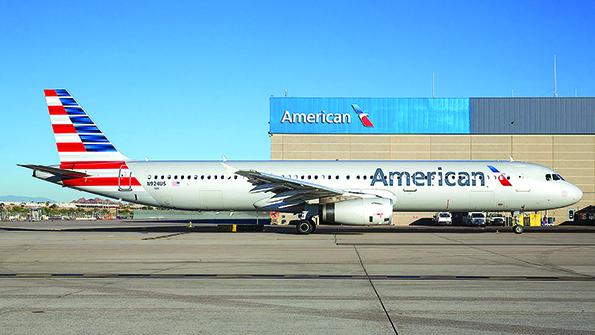
American Airlines President Robert Isom talked with Lee Ann Shay during Aviation Week Network’s virtual MRO TransAtlantic. Here is an abridged version of his remarks.
What is the American Airlines Tech Ops approach to this pandemic? How are they handling it?
We started with a fleet of well over 900 aircraft and we’ve retired 150 of those. We’ve tried to be smart about simplifying wherever possible and ultimately being there for when the airline needs us from a Tech Ops perspective.
American Airlines Tech Ops was close to finishing its Sceptre project. What’s the status of that?
The Sceptre Project—the maintenance control and tracking configuration system—is one of the last remaining items left over from the integration of US Airways and American, and we’ve been at it for some time. Bringing all our aircraft to reside in the new system has been a tremendous undertaking from an IT and maintenance perspective. We’ve taken advantage of the reduction in flight schedules during the pandemic to accelerate the conclusion of the project. And to that end, we’ve made incredible progress. As we bring all of our aircraft onto one system over the remainder of the year, and that’s a big accomplishment, it will make things much better as we come out of the pandemic from an efficiency, quality of work and quality of life for our employees perspective. It’s going to allow us to provide a more dependable and reliable service day in and day out.
How’s American handling a fleet in flux? What is your outlook for 2021?

You’re right about having a fleet in flux. We have to be really nimble in what we’re doing. At the start of the pandemic, we had pulled the schedules down by 80% plus, versus what we were flying in 2019. And that meant putting aircraft into storage in all sorts of places. So much of our attention has gone from figuring out where we put different aircraft and how we can preserve them to: OK, how are we going to build back? Where do we put aircraft so that they’re ready to go? What are the steps that we have to take so that, out of the box, reliability is at an all-time high?
The maintenance team has done a remarkable job trying to get ahead of deferred maintenance and work so we’re ready when demand returns. Having Spectre in place makes that easier. Life is also made easier by the way in which we retired aircraft. We took out four fleet types—the Embraer 190s, the 767s, the 757s and the A330s. We’ve gone from about 50 different configurations and types of aircraft down to just about 20 over the last few years. As we look at coming out of the pandemic, having rationalized the fleet, having retired the older aircraft, making sure they’re up and ready to go, that is going to be a tremendous advantage.
Hats off to the Tech Ops team for getting us in a good position. I feel really strong that when demand returns, we’re going to be able to deploy a fleet that is the best in the industry. Over the last five years, we’ve inducted almost 500 new aircraft into the fleet, so right now American Airlines has the youngest fleet in the business. That’s another advantage, and again credit goes to the maintenance team for being able to induct and retire an equal number of aircraft.
Because so many metrics that airlines use to plan their operations—including traffic demand—are in flux due to the pandemic, it seems like it would be really difficult to schedule operations—from the aircraft to routes to crews to maintenance control planning. How do you do that in this dynamic environment?
It is really tough. The schedule that we’re running today is about 60% down year-over-year. And looking toward the end of the year and to where we might be next year, of course, we don’t know. We don’t have all the answers in terms of a vaccine. We don’t know when the pandemic is going to end. I can tell you that we see a lot of leisure demand for our business right now, but things have to be open for people to want to go to different places. So there are so many variables to manage, and that’s just domestically.
Internationally, you have quarantines and different regulations about where you can and can’t fly to deal with, and that has implications for the widebody and narrowbody fleet. So you’re right about having an almost innumerable number of variables that we have to work through. Nimbleness and flexibility are key. The work that we are doing puts us in a position where we can build back smartly, and we can build back based on the demand that we see. One of the primary advantages that American Airlines has is its extensive network and partners, and we’re intent on keeping that connectivity.
The focus right now is to match our service to where the demand is and make sure our big hubs like Charlotte [North Carolina] and DFW [Dallas-Fort Worth] remain strong, have strong connecting complexes and have the maintenance and crew resources to support that. As DFW and Charlotte are able to serve leisure demand now, over time we’re confident that business traffic will come back, so we have to make sure that we have a product to serve that market niche as well. From a line maintenance organization to a base maintenance organization to all of our suppliers, we’re getting aligned around having to be incredibly flexible.
American Airlines, like several other carriers, recently had to furlough thousands of employees. Do you think that this is the last round of these for American?
It’s just nothing short of heartbreaking. We at American have just in the last couple of weeks furloughed 19,000 team members. These are folks who we’ve just brought on in the last three, four or five years, and I can tell you that we’re intent on making sure that they can come back to American Airlines and have long careers here. But this is a downturn like none we’ve ever seen.
I have to commend all of our team members, those who have been furloughed and those who are still working day in and day out for fighting through this. Our team members have put on their shoes and gotten out to work and made sure that commerce and people can still connect. And I’m so proud of them for doing that. We’ve got a long road ahead of us in terms of coming back. But it’s been really hard. Beyond the furloughs, there have been leaves that employees have taken, both paid and unpaid. There have been early retirement programs that people have taken. We’ve reduced our team members by almost 40,000 over the last few months with a number of different initiatives. But as I said before, we’re intent on growing back and growing back very efficiently.
It looks like regulators are getting close to allowing the Boeing 737 MAX to return to service soon. What are American’s plans for that?
Remember when that was one of the biggest problems that we had? It’s funny to think of how changes in priorities and initiatives come about. We’ve had 24 of our MAXs grounded well over a year, and quite frankly, they are a key component of our future fleet plan. We’ve been working very closely with the FAA, Boeing and the APA, our pilots’ union, to make sure that the right things are being done so it will be the safest and most reliable aircraft in the skies. There’s work to be done yet. But the FAA has a schedule of things that need to be done, and it looks like by sometime mid-to-late November that the MAX could return to service. That’s what we’re planning on, but we’ve had to be really flexible throughout this whole period since the MAX was grounded. We’ve positioned all of our 24 MAXs in Tulsa so that any remaining airworthiness directive work that needs to be done can be accomplished fairly quickly. We’re ready for the pilot training requirements and have MAX simulators ready to train our pilots.
Speaking of Tulsa, in late February, American unveiled plans to build a widebody MRO facility there and update existing facilities. Given the predicted slower return of long-haul travel, what’s the status of that project?
We’re committed to our base and couldn’t be more pleased with Tulsa’s support and pledge of almost a quarter of billion dollars of financing to help us make sure that the facility stays as modernized as it needs to be. The widebody project is something that is moving forward, but as with all capital investments and the downturn in flying right now, it’s something that we have make sure fits with the kind of schedule that we will be operating in the future. We’re confident that it is something that we and the City of Tulsa will be able to work on.
You mentioned that Sceptre’s completion has accelerated. Are there any other operational silver linings that you see?
American has sought to take advantage of the slowdown, to make sure that anything that we can get done to be ready for when business returns, any products that we can accelerate, that we can get those teed-up and moving. We have aircraft reconfiguration projects that are going on right now that we’ve accelerated, and that has been really good.
We’re also tied in very closely with the airframe and the engine manufacturers to look at anything that we can be doing now that will make American Airlines and the fleet that we operate much more reliable in the future.
In addition to American’s current cleaning procedures, are you looking at any other aircraft interior projects such as dividers to encourage people to fly?
We’ve really taken the steps to make sure customers are safe when they fly—from mandating masks, to looking at different ways of disinfecting aircraft, to coming out with a product like SurfaceWise, an electrostatic anti-viral coating. In terms of air circulation and the HEPA filtration, it changes out cabin air 15 times an hour. Our flight attendants, pilots and our other customer-facing team members have a lower infection rate than company staff as a whole. So I’m confident that flying is something that can be done safely. We’ve been working really hard with countries throughout the world, most recently in the Caribbean, to try to find ways to give customers and countries confidence that if you’re tested in advance and can show proof of no infection, then there are ways to avoid quarantines.




